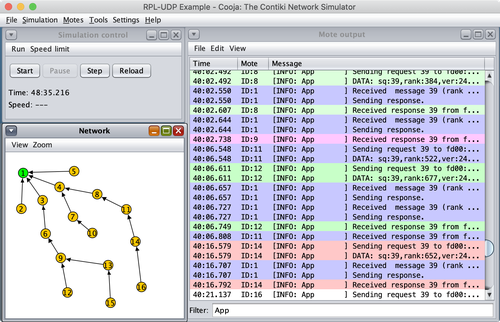STACK project shares project results videos on its Youtube Channel
The ITEA project STACK (Smart, Attack-resistant IoT Networks) will enable Internet of Things (IoT) applications with a high Quality of Service (QoS) even under non-benign circumstances. Its main innovations towards this goal include more robust IoT communication, attack detection and mitigation through performance and interference monitoring and algorithms leveraging a tight integration of IoT devices with a smart edge.
The STACK project consortium has posted several project results videos on its YouTube channel. In this article, we will highlight two interesting videos in particular. First the video on JamSense, a tool that identifies and classifies different jamming attacks on wireless IoT multi-hop networks. Second, the STACK project presents Multi-Trace, a tool enabling the efficient generation of emulated attack traces that can be used as machine learning models’ training data for smart intrusion detection mechanisms.
Identifying Jamming Attacks with JamSense
Low-power wireless networks typically operate in ISM bands and hence are susceptible to cross-technology interference. Interference can cause packet loss which wastes the scarce energy resources of battery-powered devices by requiring unintentional packet retransmissions. Jamming attacks are even more harmful than cross-technology interference as they may fully block packet reception and disturb or even disrupt applications. Therefore, JamSense was developed by the STACK project. JamSense is able to identify jamming attacks with high accuracy and it does not classify cross-technology interference from Bluetooth or WiFi interference as jamming attacks. JamSense is designed to be light-weight, allowing it to operate on resource-constrained nodes.

Generating Trace Files for Intrusion Detection with Multi-Trace
While low-power IoT mesh networks form the foundation of many Internet of Things systems, they also introduce new attack vectors. These stem from the IoT devices’ constraints in memory, computing power and energy and also the lossy nature of low-power wireless communication. Intrusion detection systems are designed to detect attackers that have managed to intrude into a network. While intrusion detection systems typically exploit various machine learning techniques, a lot of data is needed for their training. Towards this end, Multi-Trace was devised with the expertise of RISE, BEIA and Yonsei University. Using Multi-Trace, researchers and practitioners can generate a large number of (augmented) traces to train their intrusion detection algorithms. Multi-Trace is available at STACK’s github https://github.com/STACK-ITEA-Project/
To watch the videos on these and other project outcomes, visit the STACK Youtube channel: https://www.youtube.com/channel/UCUQcqEzvEYiVQfY7JF1DWcw
You can find the link at the STACK web page: https://agile.ro/stack/


